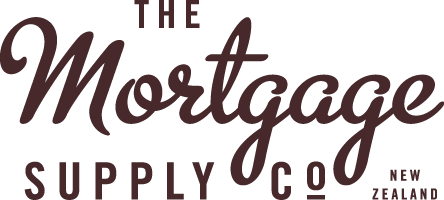.png?width=1200&name=H%26D%20_%20Blog%20Hero%20Image%20Template%20(3).png)
Just under a year ago, the Reserve Bank of New Zealand announced the removal of all LVR restrictions in light of the COVID-19 pandemic, and in an effort to stimulate the economic market in NZ. It was a heyday for investors, making credit easier than ever to attain, requiring less equity or skin in the game to buy and develop property.
However, to our delight (and possibly the Reserve Bank's pleasant surprise!) New Zealand survived the five-week, level four lockdown and bounced back with tenacity. The housing market was hot, first home buyers were queuing out the door for home loan pre-approvals and auction rooms. Barfoot & Thompson year-on-year market reporting depicted nothing less than a stellar year in the property market, with an increase of around 3000 houses sold in the 12-months leading up to December 2020, and top economists predicting the house prices to continue to soar looking forwards.
With all this in mind, as well as New Zealand’s current COVID position, RBNZ announced earlier this month that it was time to pump the brakes and begin to reintroduce regulation in the form of LVR restrictions. In essence, from 1st March 2021 the LVR restrictions for investment properties will move to an upper limit of 70%, and only two months later, from 1st May, LVR restrictions for investment properties would move to a maximum of 60%.
For first home buyers this means no real change, however for investors and property developers, the changes are significant to say the least. To put it into perspective, at 60% maximum LVR, an investor with $200,000 can buy $500k worth of investment property, whereas Owner Occupied buyers can buy $1m (at 80% LVR).
If you’re looking to buy an investment property in the near future and these upcoming changes seem bleak, don’t worry! There are a few key ways to navigate the LVR restrictions and maximise what you can borrow - it’s all about knowing the best ways to work within the rules.
Below, we outline our top three tips for property investors in light of the RBNZ announcements, but if you have any questions at all, don’t hesitate to get in touch and we can take you through it.
Tip #1: Measure Your Property Accurately & Maximise Equity
In order to meet the new LVR restrictions, investors will be required to put down a 30% - 40% deposit to secure a mortgage from the bank. If you’re looking at investing in a million dollar property, that’s $300 - $400k straight off the bat required before traditional banks will consider your application. For a lot of investors, that’s going to be a tight squeeze to say the least, and one of the key ways to make it work will be to leverage the equity you have in your current property(s).
The first port of call we’d recommend when it comes to leveraging equity, is to have an up to date valuation, to look for opportunities to increase value and deliver ROI, and to choose your valuation provider wisely. Here are some key insights on each.
Is your valuation up to date?
In the current property market, house prices are rising (and sometimes fallings) within months. A property's true value can change dramatically within the space of a month, let alone a year. When it comes to creating equity to leverage and use towards an investment property, our first suggestion is to make sure that your valuation is as up to date as possible.
If you haven’t had a valuation completed on your property within the past 6 months, it’s possible that the market may have lifted significantly in your area which could be the difference between meeting the LVR requirements or falling short by a few percent. Always keep an up to date valuation to make sure that you know the true equity you hold and are presenting your best case to the bank.
Could renovations improve your equity?
It’s no secret that renovations are one of the best ways to increase the value of your property quickly. If you’re falling slightly short of the new LVR requirements, we’d recommend looking inwards and searching for opportunities to increase the value of your current property, and in turn your equity. This process becomes exponentially more beneficial the more properties you own that could use renovation.
Our friends at Asset Lab always recommend a 1:3 return on investment ratio when it comes to making renovation decisions. You’re looking for opportunities where for every $1 you spend, you get $3 back, and leveraging this ratio can make all the difference in increasing your property’s value.
Here’s an example of how renovations could get you closer to meeting the mark:
- Original Property Value: $750,000
- Owner occupied Redraw: 600,000 at 80%
- Renovation Cost: $50,000
- Revaluation of Property (1:3 ratio): $900,000
- New owner occupied redraw: 720,000 at 80%
Increase in usable equity: $120,000
Net of renovation (spend of $50,000) $70,000
In this scenario, through spending $50,000 on renovations you’ve managed to increase your property’s usable equity increase by $120,000 - meaning you’re able to draw more funds off the back of this growth towards your investment property.*
It’s all about usable equity, the bigger the property, the bigger the renovation, the bigger the margins. We’d always suggest doing the math and looking for opportunities to bridge the gap through home improvements where possible.
*figures are estimations and dependent on your personal circumstances and valuations and subject to change.
Are you using the right property valuer?
Many people don’t realise that different property valuers will give you different figures, and that some are more accurate than others. If you’re relying on the default government valuations, you may be missing out on key equity to leverage. Here’s a quick breakdown of the different types available.
- Government Valuation (GV)
A government valuation can be provided by your regional council, and will tell you the value of your land plus the value of improvements. However, these valuations are almost never up to date and won’t include any additions you’ve made recently to the property, or the most up to date land values based on current market conditions.
- Estimated Value (EV & IV)
Estimated valuations are completed by data companies such as CoreLogic (for estimated values), or Valocity (for iVals). Most banks use these estimations to calculate LVRs, as they contain an estimated market value calculated by looking at recent comparable sales data of the properties located in the surrounding area. Other factors such as land sizes, numbers of bedrooms plus other characteristics are also considered. The property values are updated frequently and are more accurate, often meaning your equity is higher than a GV.
- Registered Valuation (RV)
Last but not least, a registered valuation is an independent assessment of your property’s value taken by a registered valuer. These cost anywhere up to $1000 to complete, and are the most accurate valuation available. When valuing a property, a valuer will undertake a physical inspection of the property and send a comprehensive valuation report.
In order to meet LVR requirements, it’s important to know that there is more than one type of valuation you can use. Some will value your property higher than others, and afford you more equity to use towards your investment property. Typically we’d recommend an EV or IV, but this is dependent on your personal situation - feel free to chat to one of our advisers for help on this.
Tip #2: Know the LVR Exemptions
Many Kiwi investors aren’t aware that there are actually some exemptions to the LVR rules. For example, looking into buying a new build as opposed to an existing dwelling can increase the funding available to you, as most lenders consider new builds exempt transactions and will go up to 80% LVR.
The theory behind this is that new builds are considered a ‘safe bet’ by banks - it’s highly likely that the property value will be higher than the cost to buy and build, and the quality of a brand new building impacts the resale value positively. From the bank’s perspective, they’re unlikely to lose money by lending to an investor on a new build.
If you’re unable to bridge the gap in equity, we’d recommend looking into new builds as an option. You can check out our blog on the different types of construction loans here.
Tip #3: Non-Bank or Near-Bank Options
If you’re unable to increase your equity through renovations or valuation methods, and a new build isn’t on the cards in the area you’re looking at investing in, we’d always suggest looking into non-bank or near-bank options to finance your loan.
Non-bank or near-bank lending simply refers to those lenders who are involved in the business of providing finance, but are not the traditional registered banks like ANZ, ASB, Westpac, and so on. Over the last few years, the non-bank sector has filled a gap in the market by providing solutions to countless Kiwis in varying situations, offering competitive rates and safe lending options to those willing to venture down a non-traditional route.
Some non or near-bank lenders use bank funds and are therefore still subject to LVR restrictions, however there are a few options that use their own funds to provide financing, and have the ability to work within more consumer friendly or outside of traditional frameworks. These lenders will be able to go above the LVR for investors with certain terms - and the best part is, they’re affordable.
If you want to strike while the iron is hot and invest in property now, these types of loans could be the perfect solution for you. If not, the alternative is to wait a few years and see how the market moves and changes - it’s all about weighing up the opportunity cost.
Want help navigating the new LVR terms?
It can be a bit of a juggling act to get everything in line to meet new LVR requirements, and often calls for a good depth of knowledge and industry nous. If you’d like help with bridging the equity gap, we’re here to help! Get in touch with one of our advisers by hitting the button below!










